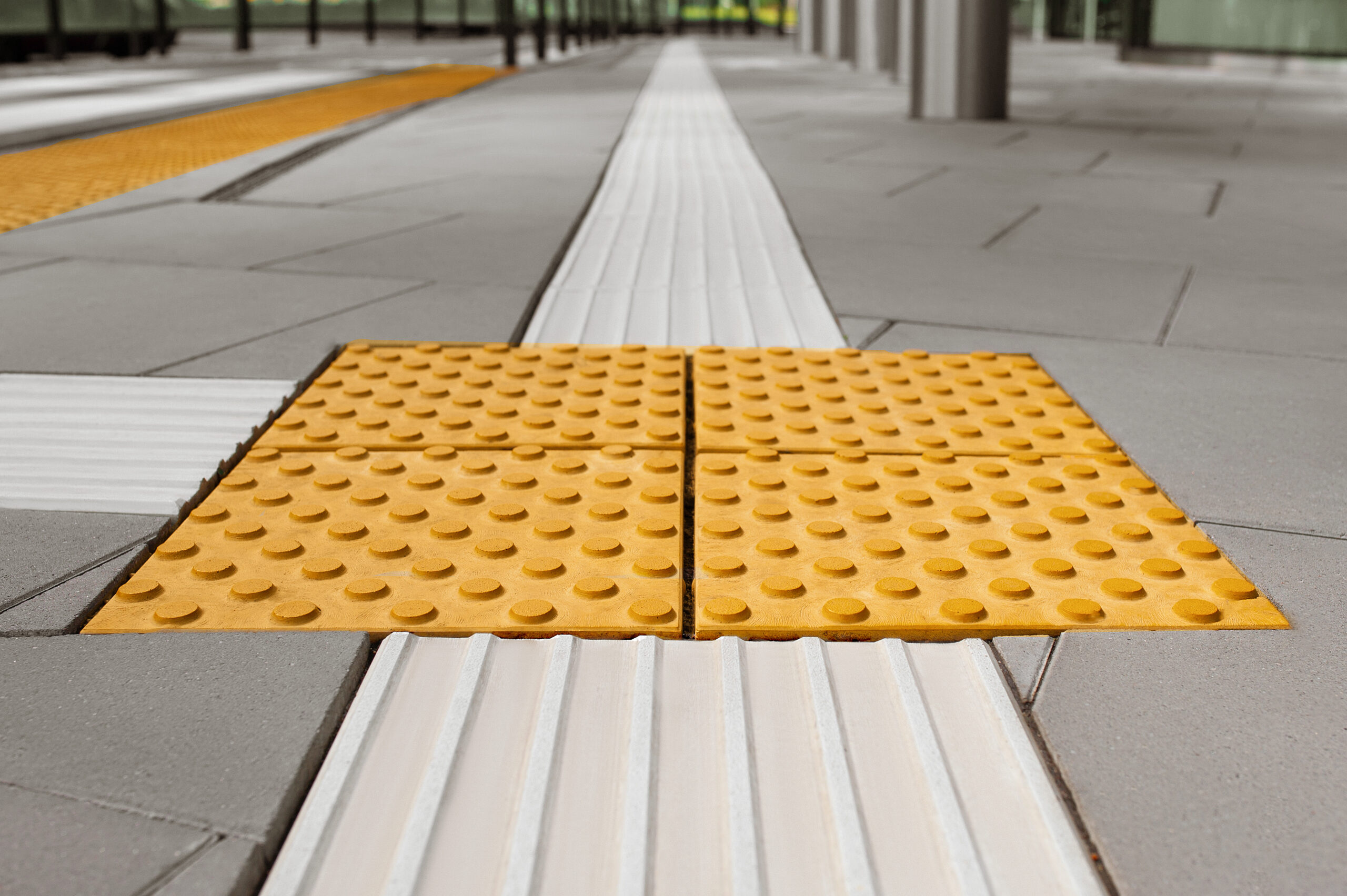Types of Tactile Paving
Tactile paving, also called tactile ground surface indicators (TGSI), is a system of textured ground surface indicators that are utilized not only to help people with visual disabilities or other impairments be guided and communicate but also to provide tactile stimulation. These patterned paving systems are normally composed of a pattern of raised or lowered puzzle pieces installed on sidewalks, pedestrian crossings, train platforms, and other available public areas. The patterns are detectable by touch and used for conveying crucial information, like directions, danger warnings, and route suggestions.
Below are the different types of tactile paving:
Blister or Dot Patterns: This tender pavement has small, curved ridges or dots crisscrossed in a regular grid pattern. These lines are descriptive in nature and are utilized to symbolize dangers, such as the edge of railway platforms, the top or bottom of steps, and the edge of pedestrian crossings. The bowl positioning of the bumps stabilizes the walkways and offers a different tactile sensation.
Lozenge or Corduroy Patterns: Lines and corduroy patterns have bins parallel to the flow direction. These schemes are typically employed to guide pedestrians to safe routes, like the sidewalks, the crosswalk, or the station entrance. The stretched bars offer a continuous, tactile surface that can be walked on or can be navigated. Therefore, sight-impaired people are able to move around and navigate their way.
Truncated Dome Patterns: The sunken pattern of domes contains small domes or cones truncated at the top. They are usually utilized in such a way as to notify pedestrians of dangerous situations, such as a road approach or platform rappel. The domes are placed close to each other to form a continuous surface that gives similar feedback all over the place.
Directional Patterns: The directing trails system is developed for the orientation needs of visually impaired pedestrians. They are usually a set of lines, arrows, or other elements showing the way in which pedestrians have to pass through a certain path or route. An alignment pattern can be combined with other types of special paving in order to improve the way pedestrians circulate in complex places.
Color-Contrasted Paving: In addition to the tactile cueing provided by texture differentiation, color-contrasted paving is also sometimes used to give visual cues to pedestrians with low vision. The striking contrast of colors used, for instance, yellow or white against a darker background, can help visually impaired people identify various surface types or hazards.
Key Takeaway
Tactile pavements of these disparate types are usually combined and used in an orderly manner across the urban area to serve as an overall system aiming at comprehensive guidance and overall safety for pedestrians with visual disability. Through a combination of textures, patterns, and colors, tactile paving structures are designed so that disabled and non-disabled individuals can enjoy a single space of independence and safely walk around. However, it should be cautioned that tactile paving should be done by meeting the relevant accessibility guidelines and standards to ensure effectiveness and consistency across many locations.




